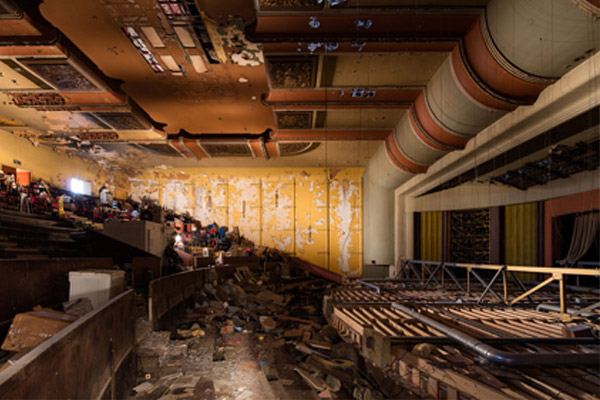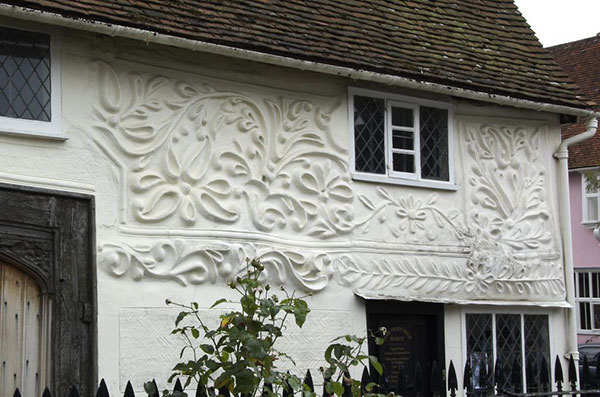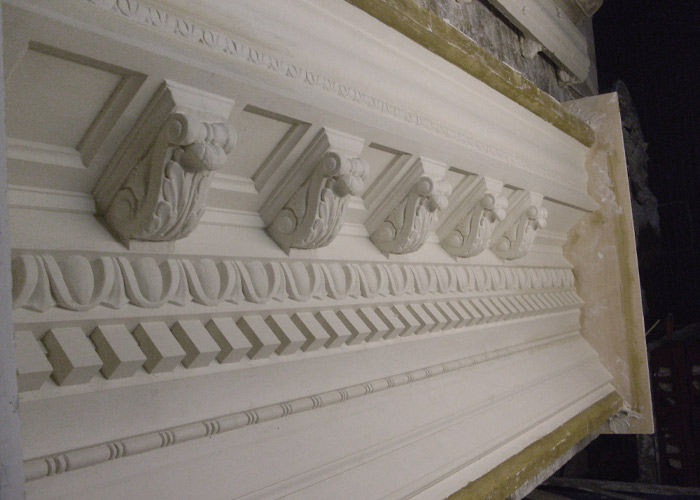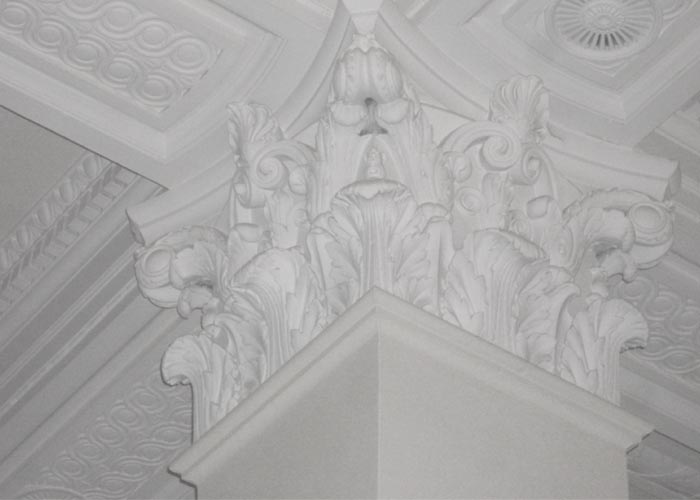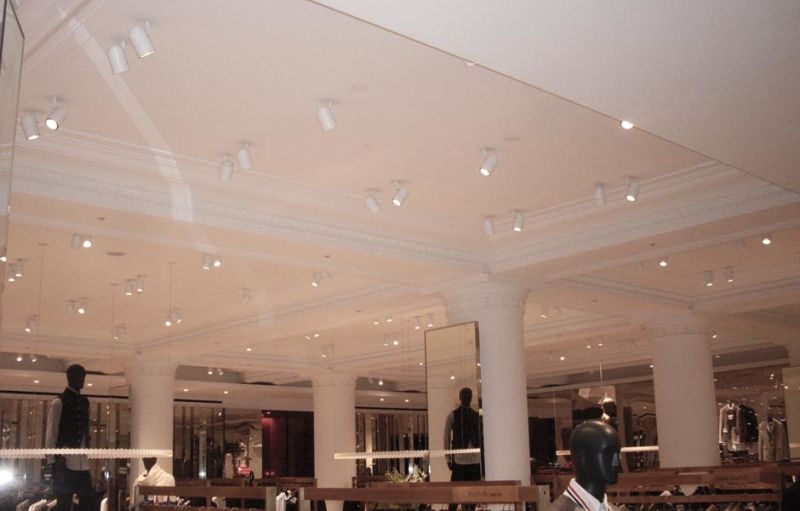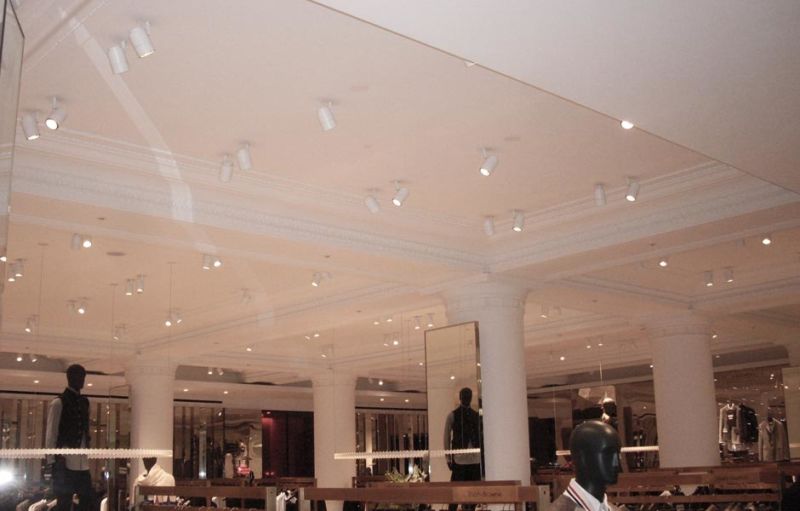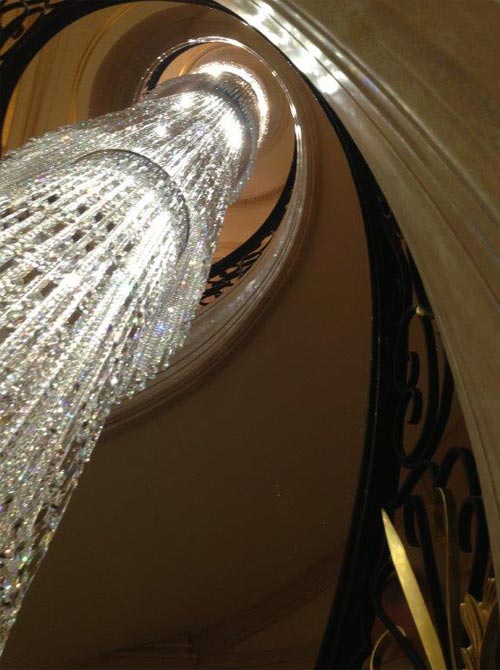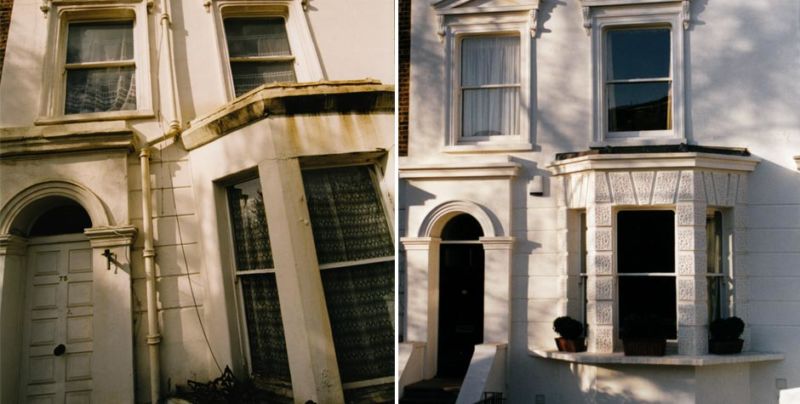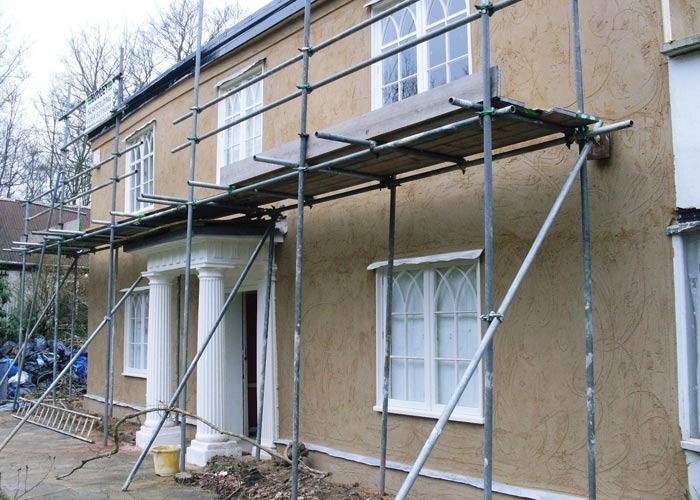Cinema to Art Centre For Hackney
Tucked away behind a hair salon and a tattoo artist on Stoke Newington Road is the building set to become the Hackney Arts Centre later this year. This former cinema, closed up and unmaintained since 1984, is having new life breathed into it through an exciting refurbishment being undertaken by locally based company, Village Underground. The purpose of this new beginning being to once again allow this wonderful building to become a venue that all can be proud of. A venue that can host the many and varied events required of such an Arts Centre.
Heritage Plaster Services are very pleased to have been involved in this process from the very beginning, liaising with Village Underground in the formation of the initial scope of works and methodology, through the completion of the works and to the provision of the safety certification required for ceilings in such venues.
In order that this restoration can take place the initial works were to ensure the safety and stability of the glorious art deco fibrous ceiling that lies above the main auditorium. This was achieved via site re-securing works that were completed prior to the first event which took place during the week of 12th February. The second phase of works due to take place during March is the insitu repairs to the damaged and lost sections of the ceiling, which will be completed from moulds manufactured to match to the existing remaining details.
Originally opening on 26th October 1936, The Savoy Cinema was one of three luxury cinemas opened by Associated British Cinemas (ABC) in Hackney in the 1930s. Designed by Scottish architect William Riddell Glen in the art deco style, these cinemas were in possession of huge, decorative interiors similar to that of a West End Theatre and were perfect for entertaining large audiences.
The first film shown at the Savoy was Mr Deeds Goes To Town. Starring Gary Cooper and Jean Arthur, this was the tale of a small town multi-millionaire and his attempts to do good with his money in the big city, despite the ruthless rich people there trying to take advantage of him and dissuade him for their own ends. A popular film, it was nominated for five Academy Awards with Frank Capra eventually winning Best Director.
An advert from February 1937 tells us that the Savoy featured a Compton Theatre Organ. Originally employed to provide a soundtrack to silent films, by the time the Savoy opened films had sound and the organist became a feature in their own right; entertaining the audience between films and features and covering any technical hitches. The Compton Theatre Organ Company are proud to have the Savoy as one of their clients – ‘The most convincing proof of the popularity of Compton Theatre Organs,’ says the advert, ‘is the list of actual contracts placed by the big circuits.’ Listed below as one of the ‘big circuits’ is ‘Savoy, Stoke Newington (ABC).’[1] The organ was still in use well in to the 1950s – in November 1953 The Stage magazine reports that ‘Arthur Lord, the BBC Organist, appeared at the Savoy cinema, Stoke Newington, last week to mark the occasion of the cinema’s seventeenth birthday’.[2]
In September 1939, on the outbreak of war, the Savoy and all other cinemas in Britain were closed by government order. Prompted by fears of German bombing, the government wished to avoid filling urban buildings with large crowds of people and so cinemas and other places of entertainment were closed. The closure only lasted a month, due to unpopularity, and the Savoy would have been open again by the end of October.
For most cinemas in Britain, the war was a busy, if disrupted, time. It was during the war that cinema attendance figures hit 1.5 billion for the first time and the Wartime Social Survey carried out
[1] Advertisement, The Era, 17th February 1937, accessed on British Newspaper Archive
[2] The Stage, 5th November 1953, accessed on British Newspaper Archive
by the government in 1943 showed that 70% of Britons went to the cinema either frequently (32%) or occasionally (38%). Ticket prices were cheap, and the majority of these cinema-goers were urban and working class despite these also being the people most likely to be worst affected by bombing. The most popular films were glamorous Hollywood classics, such as Gone With the Wind and there are reports of people queuing up for the morning viewing in Leicester Square amidst the fires from the previous night’s bombing. Apart from the occasional hit, such as In Which We Serve (1942), combat films were not popular, and these glamorous films may have provided an escape from the bombing and hardship of everyday life.
The Savoy was in an area badly affected by bombing. It is estimated that more than 700 bombs fell on this small area of London alone during the Blitz, and bombs and V1 and V2 rockets continued coming after that. Maps show that the area around the cinema was badly damaged although the cinema itself does not appear to have been hit despite bombs falling on surrounding roads such as Alvington Crescent, Shacklewell Lane, Princes May Road and Birkbeck Mews. Further down Stoke Newington Road, at numbers 157-161, over 160 people were killed on 13th October 1940 when a bomb hit these buildings and the basement rooms below which were being used as a public air raid shelter.
Having survived the war, the Savoy was one of 30 cinemas in Hackney still operating in 1950, the first year since the outbreak of war that audiences started to decline. A special event held at the Savoy for New Years Eve 1953 shows that older styles of entertainment were still being combined with cinema, as with the organists before the war. ‘Bill Hender, Manager of the Savoy, Stoke Newington, is compering his own stage show at a midnight cine-variety show at the Savoy this evening,’ reports The Stage, a national magazine for the entertainment industry, suggesting the Savoy was also still a large and popular venue.[1] A cine-variety show was where variety and music hall style acts performed in between the showing of films, a combination of old and new entertainment.
In 1961, the Savoy was renamed ‘ABC’, along with all other ABC cinemas in Britain. Listings reveal that this is also when it became more like what we would call a cinema today – just showing films, rather than including organists and variety acts as well. That is not to say these films were any less entertaining – on 26th December 1965 Elvis Presley’s film Harem Holiday was released at ABC Stoke Newington with a summary that sounds just as entertaining as any variety show: ‘Presley rescues princess by means of karate’.[2]
By this point in time, ABC were the second biggest cinema company in Britain, owning 301 out of a total 3,000 cinemas. However, the impact of television had led to a decline in cinema admissions which by the 1960s had started to affect even the bigger companies. The ABC in Stamford Hill, formerly known as The Ritz and one of the luxury cinemas built at the same time as The Savoy, closed its doors for good in July 1961. The Daily Herald reported that cinema audiences were down 62% from 1950 and suggests that investors should consider opening a bowling alley instead: ‘It has been reckoned that a bowling alley can earn in a day what a cinema took a while week to earn.’[3]
Despite the Daily Herald’s advice, ABC continued to operate ABC Stoke Newington, although by now the company had branched out in to television, winning the contracts for Independent Television (ITV) in the North and Midlands and producing successful shows like Opportunity Knocks. With audiences continuing to decline, however, the ABC Stoke Newington eventually went the same way as that of Stamford Hill and was sold off, showing Cross Of Iron with James Cohen as its last film on 12th March 1977. It was bought and reopened the next day as the Konak Cinema, showing Bollywood films until 1982 when it was again sold and reopened as Ace Cinema. This lasted even less time that Konak had, closing just under two years later on 16th February 1984 with Scarface.
It seems that so far, no other venture since the Savoy has had as much staying power. The company behind the Hackney Arts Centre, Village Underground, have several other London successes under their belt, however, and so hopefully this latest renovation will restore the building to the impressive community centre for entertainment it must have been when it first opened. With their intention to create not only a place for watching, but also for participating in and encouraging creativity, they may even surpass it.
[1] The Stage, 31st December 1953, accessed on British Newspaper Archive
[2] The Tatler, 25th December 1965, accessed on British Newspaper Archive
[3] Daily Herald, 24th July 1961, accessed on British Newspaper Archive


